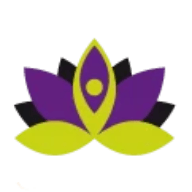Pratyahara and Antar Mouna’s practice

A good technique to achieve Pratyahara (the fifth branch of the yoga according to Patanjali and which consists in moving our senses inward) is, according to me, Antar Mouna’s practice.
To learn to fix our attention is an essential datum to any approach of yoga, because the mental strengths are scattered at first.
Antar Mouna is a very good technique to set up an approach of observation and it is complementary with any other practices of yoga which we are used to exercising.
This practice teaches us to consider that the meditation is first of all an act of observation.
We have to succeed here in a single thing: not be involved and pulled by what is occurring, whether it is an outside noise, a sensation in the body, a thought or a mental image.
We become an observer instead of ignoring what exists and to want to impose silence.
It is so an attitude of witness that we favor: witness the environment, witness oneself, have the possibility of being aware from the outside or from the inside or both at the same time.
The various stages of antar mouna work on the basis of an objective observation, either on the basis of the body, or the senses, or on the basis of the thoughts.
Gradually, the truth prathyaara settles down, in the sense that we can really get loose from a thing only after having learnt to know it.
The result is neither a cut nor an impoverishment but a real control of our own material, without a shadow of a judgment, or of a rejection or of a led fight in the name of the principles we adhered without knowing how to concretize them in the real-life experience.
This technique incites to go to the essential: knowing each other and accept us such as we are, while having more ways to manage the thoughts, the associations of ideas, the feelings, etc.
This quality of witness, called “drashta” in Sanskrit, is present in us because of the capacity of double consciousness that the nature gave to the human beings.
But we have to exercise it and strengthen it.
By following the technique of antar mouna, we cannot only learn to interiorize ourself without creating any internal conflict but also undertaking a real psychological purge.
Internal silence, antar mouna, arises from himself when any fight stopped.
Tantra, which is in fact at the base of all the yoga, recommends to become aware of what we are, and to set up a transformation process, to establish our health, our balance and our peace.
To work on ourself involves first of all a sense of gratitude and and of acceptance, without these observations are soiled by judgments, rejections or inhibitions.
The problem lives in this stage. Do we prefer to imagine what we would like to be or do we agree to see each other such as we really are?
The post Pratyahara and Antar Mouna’s practice appeared first on BBYoga.

Beatrice Bassi
Yoga et
rééducation posturale
Saint Tropez - France
Email:
info@bbyoga.fr
Tel.
+33 624 794098
Menu
Tous droits réservés | bbYoga. N. SIREN 820942621




